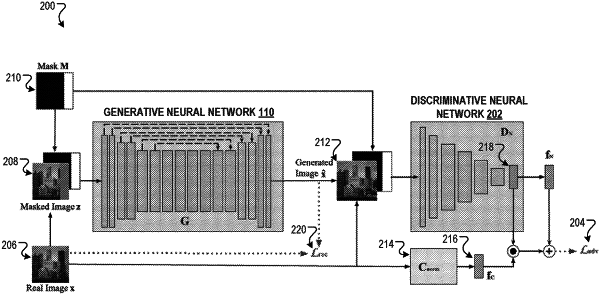| CPC G06V 10/82 (2022.01) [G06N 3/045 (2023.01); G06T 7/10 (2017.01); G06T 2207/20132 (2013.01)] | 16 Claims |

|
1. A method performed by one or more data processing apparatus, the method comprising:
providing an input that comprises a provided image to a generative neural network having a plurality of generative neural network parameters, wherein:
the generative neural network processes the input in accordance with trained values of the plurality of generative neural network parameters to generate an extended image;
the extended image has (i) more rows, more columns, or both than the provided image, and (ii) is predicted to be an extension of the provided image; and
the generative neural network has been trained using an adversarial loss objective function;
training the generative neural network using the adversarial loss objective function comprises processing a training input that comprises a training image using the generative neural network;
the generative neural network is jointly trained with a discriminative neural network having a plurality of discriminative neural network parameters that is configured to process a given image to generate a discriminative output characterizing a likelihood that the given image was generated using the generative neural network; and
the discriminative neural network is conditioned on a semantic feature representation of a target image, the training image being a cropped representation of the target image, wherein the semantic feature representation of the target image is provided as either: an additional input to the discriminative neural network; or the discriminative output is determined based at least in part on a similarity measure between the semantic feature representation of a target extended image and an intermediate output of the discriminative neural network, and wherein the semantic feature representation of the target extended image is normalized by a normalization engine prior to using it to condition the discriminative neural network.
|